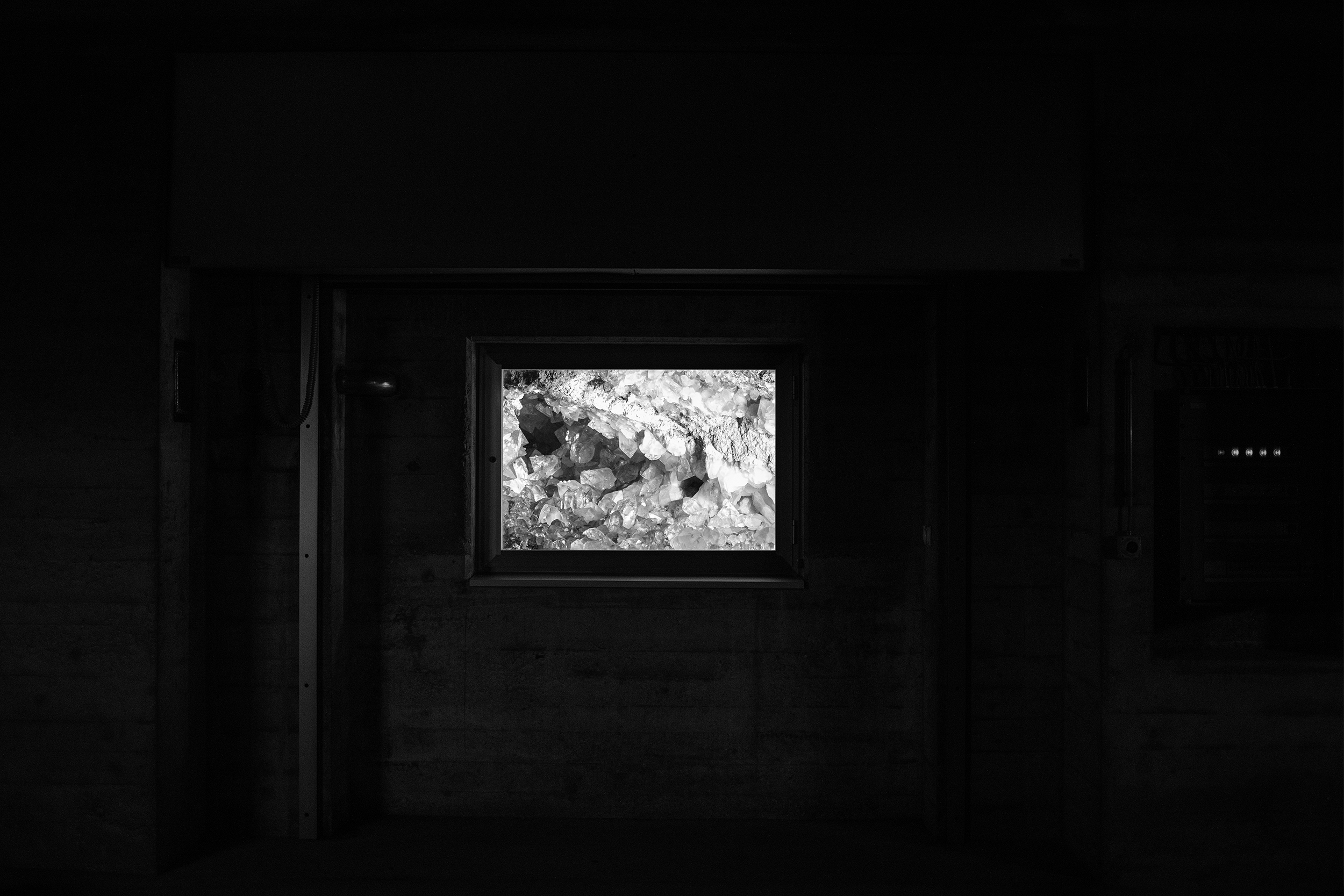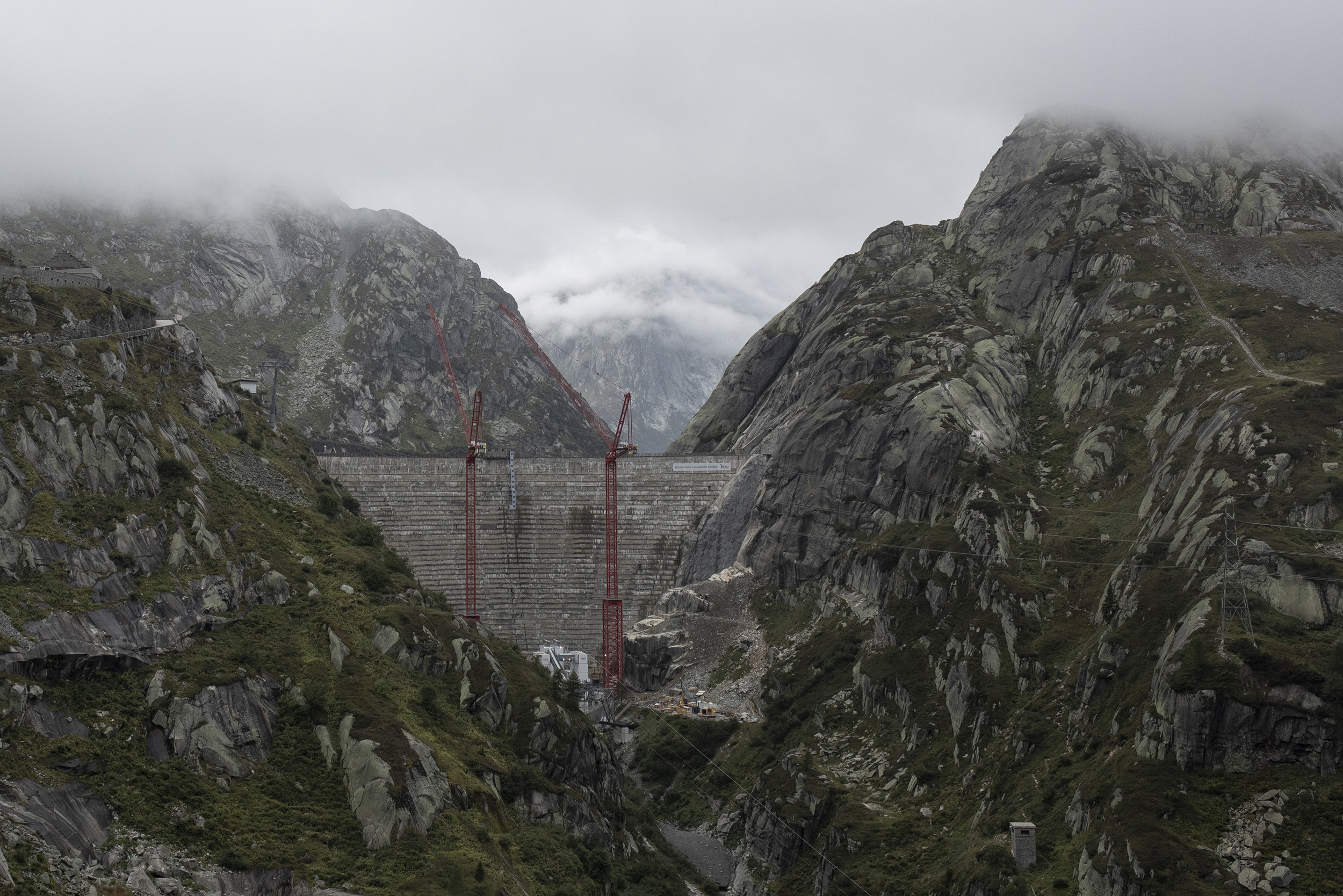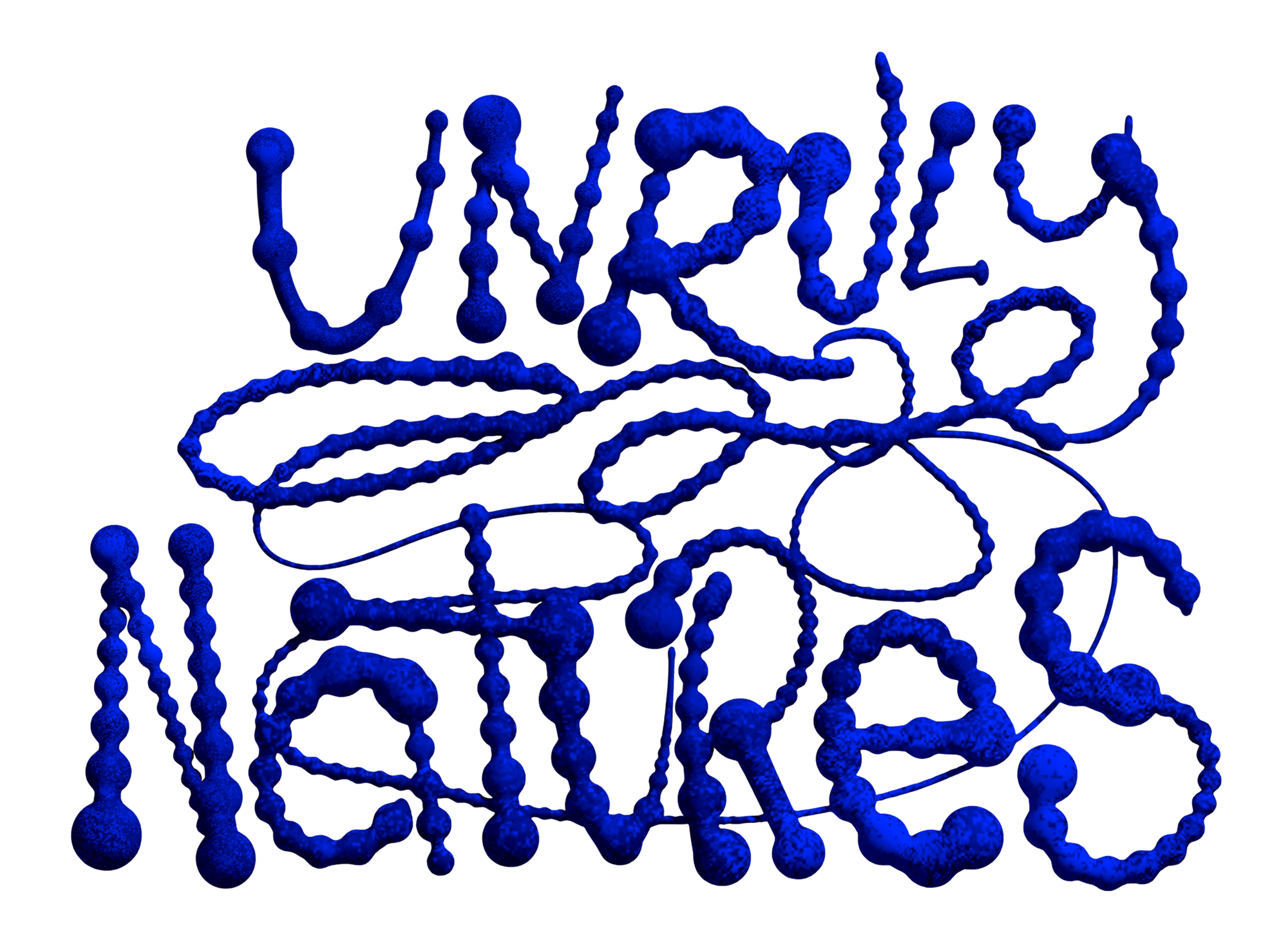︎
Logbook September 15th / 16th 2021
Written by Rony Emmenegger, Flurina Gradin, Isabel Seiffert
Photographs by: Offshore Studio
The Grimsel Rock Laboratory and the Crystal Cave
︎

Participants arrived in Oberwald in different groups during the afternoon and late-evening. For those of us staying in the Chalet Wider, the acquaintance with the old, worn out wood boards and deceptive architecture of this traditional building was an initiation to the eccentric materiality of earth-beings.
We walked around Oberwald in the rain, and noticed the contrast between the traditional Alpine architecture of the village and the imposing infrastructure of tall electricity pylons carrying high-voltage from the artificial lake reservoirs. The first day in the Upper Wallis concluded with an Italian pasta dinner in the Chalet and meeting some well-known friends and some lesser-known participants.
The Grimsel Rock laboratory
Departure from Oberwald, 8.30am. We split into cars to drive up the serpentine road from Oberwald to Grimsel Pass and down to Guttannen on the other side of the mountain. There we met our guide from Nagra (National Cooperative for the Disposal of Radioactive Waste) who, after a short introduction and validation of our Covid certificates, accompanied us up, again, into the mist enshrouding the mountainous Grimsel area and the entrance to the rock laboratory.
Departure from Oberwald, 8.30am. We split into cars to drive up the serpentine road from Oberwald to Grimsel Pass and down to Guttannen on the other side of the mountain. There we met our guide from Nagra (National Cooperative for the Disposal of Radioactive Waste) who, after a short introduction and validation of our Covid certificates, accompanied us up, again, into the mist enshrouding the mountainous Grimsel area and the entrance to the rock laboratory.

The Grimsel rock laboratory located at 1730m altitude was the first station in our field trip. Established in 1984, the rock laboratory has since served a number of national and international organizations as a site for the investigation of granite – a rock formation considered suitable for the long-term storage of nuclear waste. Granite qualifies as “host rock” due to its geo-physical properties and particularly its hardness and stability. For the scientists who have worked in the lab over the years, however, granite is not simply a relic of a bygone geological past. Rather, it is a dynamic rock formation that moves, breathes and lives.
For us as visitors, the walk through the galleries also opened a window into the geo-physical presence of deep time, which we tried to capture with our senses, cell phone, photo and video cameras and audio recorders. And yet, encountering the very earth-being we had intruded remained challenging as we moved at different pace, breathed in different rhythms, and lived with different intensity.
Furthermore, decades of political debates about the disposal of nuclear waste had been inscribed into the rock, now further complicating our encounters with the earth-being – one that appeared anyway a bit drowsy, likely because, at least in Switzerland had, the nuclear waste disposal program has long shifted its attention towards clay rock formations situated elsewhere.
* * *
It is a kind of “earth-being” which the scientists are commissioned and committed to explore and understand with the help of high-tech measurement tools from within one of the galleries carved into the rock formation.
For us as visitors, the walk through the galleries also opened a window into the geo-physical presence of deep time, which we tried to capture with our senses, cell phone, photo and video cameras and audio recorders. And yet, encountering the very earth-being we had intruded remained challenging as we moved at different pace, breathed in different rhythms, and lived with different intensity.
Furthermore, decades of political debates about the disposal of nuclear waste had been inscribed into the rock, now further complicating our encounters with the earth-being – one that appeared anyway a bit drowsy, likely because, at least in Switzerland had, the nuclear waste disposal program has long shifted its attention towards clay rock formations situated elsewhere.
* * *



Following our visit of the rock laboratory, we drove up to Grimsel Pass to have lunch. Our plan was to eat at the Grimselhospiz, a traditional restaurant and hotel popular with tourists and motorcyclists. The Grimselhospiz is located at the summit of the pass, at an altitude of 2,164 meters. From this point, we would have had a stunning view on the surrounding lakes and the swirly serpentines of Furka Pass. But as it was a rather rainy day, dense fog started to fall in and walls of clouds had built up. Happy to escape the harsh weather for a while, we gathered inside the restaurant and enjoyed an overpriced Tarte Flambée Hospiz.
After recuperating in the warmth of Grimselhospiz, our group swarmed out to explore the area. The alpine landscape in front of us was still shrouded in fog, but thanks to some gusty winds we could catch glimpses of our surroundings.
After recuperating in the warmth of Grimselhospiz, our group swarmed out to explore the area. The alpine landscape in front of us was still shrouded in fog, but thanks to some gusty winds we could catch glimpses of our surroundings.
 The Spitallamm dam and the construction site for the new dam.
The Spitallamm dam and the construction site for the new dam. What came to the fore in-between the wafts of mist was a landscape deeply impressive and truly disturbing at the same time. This was the giant silence of the alps, which had fused with the sharp lines and graphic shapes of massive energy and transport infrastructures. The alpine territory in front of us had been covered with and traversed by a dense network of roads and high voltage power lines that seemed to come from nowhere and end somewhere far beyond the fog, humming all along.
In-between, we saw a few lakes, colored in a grayish turquoise by glacier waters, evoking the romantic idea of the pristine mountain lake. However, the biggest of them, Lake Grimsel, is an artificial lake, a hydroelectric reservoir, that helps to produce electricity by locking and unlocking the 114 meters high Spitallamm dam. Rising next to the dam we marveled at the bodies of two huge red Wolff tower cranes rising into the clouds. They were there because the dam wall needs to be replaced. After 90 years of operation, an evolving crack had become too much of a hazard.
In the corner of the extensive parking lot in front of Grimselhospiz, we stumbled upon a small tourist center. Seeking shelter from the rain, we sneaked in and discovered that the center hosts a small exhibition about the Spitallamm dam. We learned more about the history and the new construction of the dam through the marketing jargon and cooperate photography of this exhibition.
The initial double curvature wall of the dam has been built between 1925 and 1932, has a stair-structure, and allows the lake to hold a capacity of 95 mio m3 water. It is considered a pioneering engineering project, feeding the notion of Switzerland as a country that knows how to master its landscape. However, a large amount of the construction work had been carried out by hand under great dangers by 600 construction workers, mainly migrants. To organize work efficiently, a guest house had been set up for these workers at the summit, which was later converted into part of the new Grimsel Hospiz Hotel.
As we walked from information board to information board, looking at archival photographs and video footage, we learned that today, Spitallamm dam is the most important hydroelectric reservoir in the region. Its waters are operated by the energy producer Kraftwerke Oberhasli AG (KWO), which is also responsible for the two giant cranes we had seen before. Surprisingly, these cranes were not here to repair the existing dam wall, but to build a completely new one, directly in front of the old one (which will remain in place but will have big holes put in it to let the water through). Approximately 220,000m3 of concrete is needed to build the second, 114-metre-high wall.
We didn’t stay for too long, since the exhibition is located underground, and our feet were getting cold. When we resurfaced from the exhibition, while leaving the tourist center, we encountered a big group of tourists, that was about to enter the small space. Right on time, we put our cameras and notebooks aside, left the scene, and got back into our cars.
 A cloudy view on the passroads to Grimselpass and Furkapass.
A cloudy view on the passroads to Grimselpass and Furkapass.After this first excursion the entire research group gathered at Chalet Wider in Oberwald for the afternoon program. We assembled around the large kitchen table, and the fellows introduced themselves to each other for the official kick-off. With the impressions of the morning, the meeting already showed a welcoming sense of familiarity. The experiences had created a common sphere of experience that could only be shared in the group. The intimacy of a kitchen table in the time-honored chalet Wider with its winding rooms, for their part, contributed to giving the meeting an almost mysterious quality.
The second part of the afternoon was entirely devoted to a thematic introduction presented by Flurina Gradin. This included an insight into the web of connections between human, nature and culture in the region, and their inseparable relationship of dependencies. Based on, among other things, cultural-historical photographs from the archives of the historical association Oberwald, we dealt with facts about geology, geography, ecology, economy, agricultural and religious history, and tourism.
Special attention was paid to the history and importance of the transport infrastructure (road and rail network, tunnel construction) and to alpine tourism in the context of the different changing seasons. Furthermore, the history and current situation of the energy development and use of the region was discussed.With wind farms, high pressure gas lines, a planned natural gas storage station, various larger and smaller hydroelectric power plants and high voltage power lines, there is a remarkable diversity in a small area.
In order to find the thematic introduction to the topic of the field trip, we used the last part of the afternoon to engage with the complex notion of tirakuna or "Earth-Beings". Starting from the publication "Earth Beings. Ecologies of practice across Andean Worlds" by Marisol de la Cadena, Federico Luisetti opened up differentiated research perspectives on the topic. Starting from concrete examples, such as the ZAD Colline du Mormont near Lausanne, the topologically heterogeneous landfill Nant des Grandes Communes in Geneva, or the historically loaded Pierre des Marmettes in Monthey, we discussed in the group the role of infrapolitical natures in Switzerland and in the Upper Valais and shared our individual approaches and thoughts.

It was just at the end of our first day when we were on our way back from the dinner in Geschinen and our thoughts meandered around our experiences of walking beneath 4000m of mountain rock, marveling at huge mineral rock crystals, being at awe of the scale of human made hydroelectric infrastructures in the middle of an otherworldly landscape that seemed to only exist in a range of light mint green and grey brownish colors.
There were four of us squeezed into one of the cars, chatting about our first impressions of the field trip, when someone warned to watch out for the "fox" who was about to cross the road.
We all quickly leaned forward and because of her current ongoing research project, Isabel Seiffert and Christoph Miler were so familiar with the physiognomy of the animal that they recognized the scale, shape, colors, and movements immediately. Instead of a fox, we were in the company of a wolf.
Just a few hours earlier that day, some of us had chatted about the return of the wolf to Switzerland and its presence in the Upper Valais specifically. We were joking about the potential to see a wolf during our trip in the following days. But out of the blue, just before the first day ended and only for a split second in the light cones of our car, we got a glimpse of a wolf passing.
